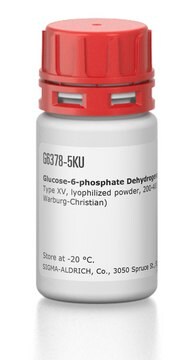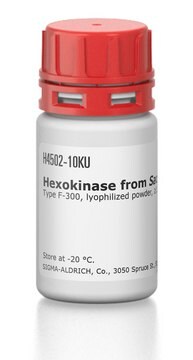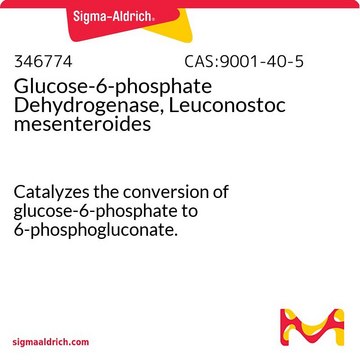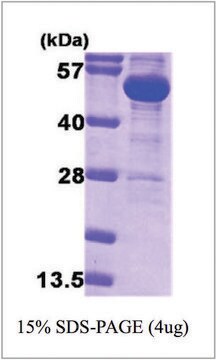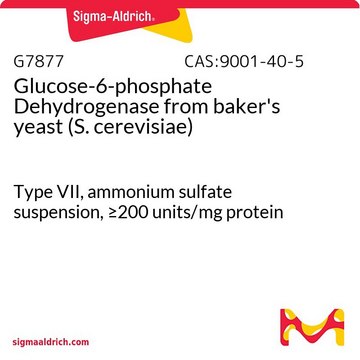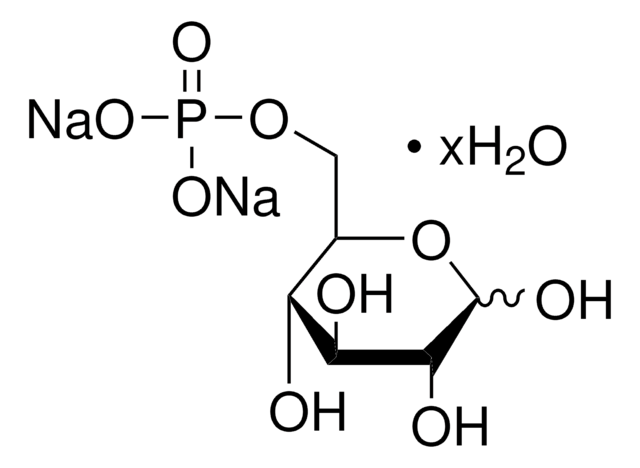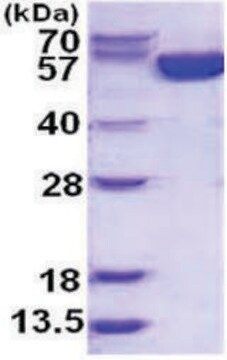G8529
Glucose-6-phosphate Dehydrogenase from Leuconostoc mesenteroides
recombinant, expressed in E. coli, lyophilized powder, ≥550 units/mg protein (biuret)
Sinónimos:
G-6-P-DH
About This Item
Productos recomendados
recombinante
expressed in E. coli
Nivel de calidad
formulario
lyophilized powder
actividad específica
≥550 units/mg protein (biuret)
composición
Protein, 10-40% biuret
aplicaciones
agriculture
actividad extraña
creatine phosphokinase, glutathione reductase, myokinase, NADH oxidase, NADPH oxidase, phosphoglucomutase, 6-phosphogluconic dehydrogenase, phosphoglucose isomerase, lactic dehydrogenase, hexokinase ≤0.01%
temp. de almacenamiento
2-8°C
¿Está buscando productos similares? Visita Guía de comparación de productos
Aplicación
- in the coupled spectrophotometric assay for PGI (F6P to G6P reaction)
- to study the starch time course using Nicotiana tabacum leaves
- to determine the glucose content in the root and stem samples of Quercus velutina Lam. saplings
- to assay glucose using a starch sample of wild-type and transgenic Arabidopsis whole seedlings
Acciones bioquímicas o fisiológicas
Definición de unidad
Forma física
Código de clase de almacenamiento
11 - Combustible Solids
Clase de riesgo para el agua (WGK)
WGK 3
Punto de inflamabilidad (°F)
Not applicable
Punto de inflamabilidad (°C)
Not applicable
Equipo de protección personal
dust mask type N95 (US), Eyeshields, Gloves
Certificados de análisis (COA)
Busque Certificados de análisis (COA) introduciendo el número de lote del producto. Los números de lote se encuentran en la etiqueta del producto después de las palabras «Lot» o «Batch»
¿Ya tiene este producto?
Encuentre la documentación para los productos que ha comprado recientemente en la Biblioteca de documentos.
Los clientes también vieron
Protocolos
Enzymatic Assay of Glucose-6-Phosphate Dehydrogenase (EC 1.1.1.49)
Nuestro equipo de científicos tiene experiencia en todas las áreas de investigación: Ciencias de la vida, Ciencia de los materiales, Síntesis química, Cromatografía, Analítica y muchas otras.
Póngase en contacto con el Servicio técnico
